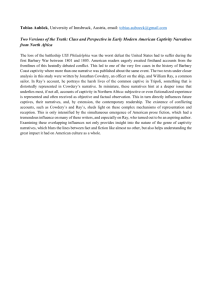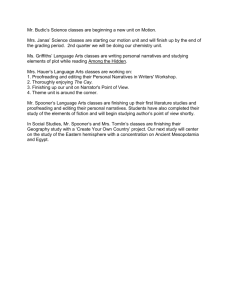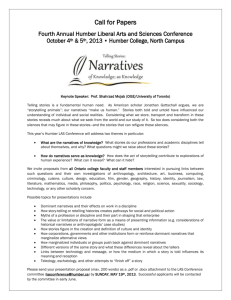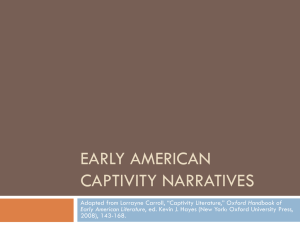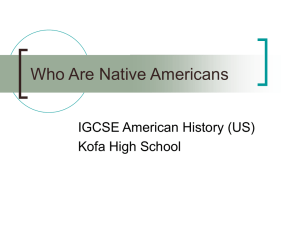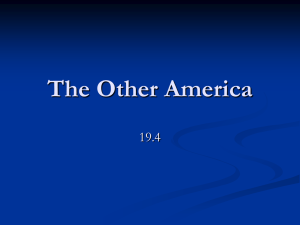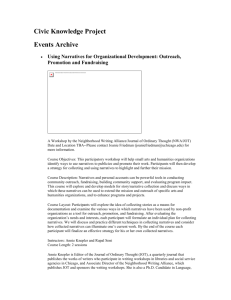Captivity Narratives Annotation
advertisement
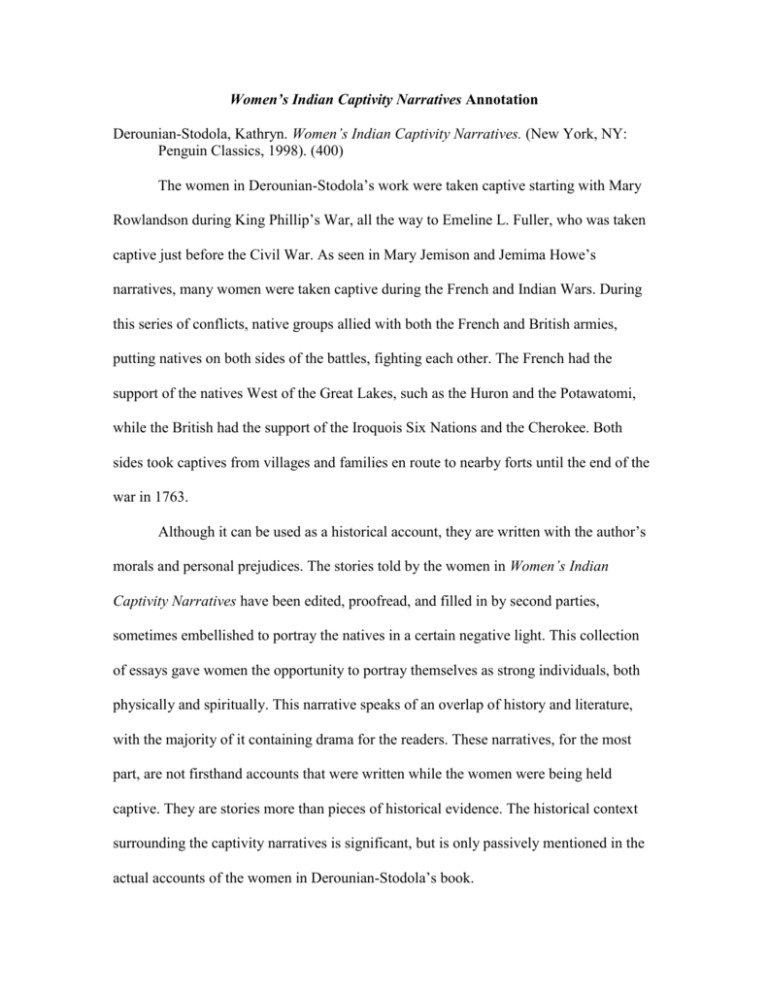
Women’s Indian Captivity Narratives Annotation Derounian-Stodola, Kathryn. Women’s Indian Captivity Narratives. (New York, NY: Penguin Classics, 1998). (400) The women in Derounian-Stodola’s work were taken captive starting with Mary Rowlandson during King Phillip’s War, all the way to Emeline L. Fuller, who was taken captive just before the Civil War. As seen in Mary Jemison and Jemima Howe’s narratives, many women were taken captive during the French and Indian Wars. During this series of conflicts, native groups allied with both the French and British armies, putting natives on both sides of the battles, fighting each other. The French had the support of the natives West of the Great Lakes, such as the Huron and the Potawatomi, while the British had the support of the Iroquois Six Nations and the Cherokee. Both sides took captives from villages and families en route to nearby forts until the end of the war in 1763. Although it can be used as a historical account, they are written with the author’s morals and personal prejudices. The stories told by the women in Women’s Indian Captivity Narratives have been edited, proofread, and filled in by second parties, sometimes embellished to portray the natives in a certain negative light. This collection of essays gave women the opportunity to portray themselves as strong individuals, both physically and spiritually. This narrative speaks of an overlap of history and literature, with the majority of it containing drama for the readers. These narratives, for the most part, are not firsthand accounts that were written while the women were being held captive. They are stories more than pieces of historical evidence. The historical context surrounding the captivity narratives is significant, but is only passively mentioned in the actual accounts of the women in Derounian-Stodola’s book. The narratives depict a very complicated relationship between natives and whites. In some instances, the captives were so happy with their new life among the natives, they decided to stay and be assimilated into the tribe. This was the case with Mary Jemison, who was adopted by the Seneca tribe and lived with them until her death in 1833. In other cases, the narratives were stories of the colonial woman’s triumph and defeat of her savage captors. This is seen in Hannah Dustan’s narrative, in which she killed and scalped ten natives with the help of fellow captives. The Native Americans treated female captives as slaves, but as human beings with talents to be traded. The female natives were not only equals to their male counterparts, but were placed in charge of the household and in charge of the captives. Mary Rowlandson was allowed to sew pieces of clothing in exchange for food and other items. Depending on who the author is, there are both positive and negative relations between the natives and the whites. These narratives are a testament to the strength of a woman’s faith through trials, and the possibility of overcoming oppression by the men in my society. They are heroic stories, with females at the center. Historians can treat this book as a primary source, but it is a source that is riddled with personal morals and a one-sided worldview. The narratives can be used as a way of getting inside the person’s head, knowing their thoughts at that time in history. It is a valuable source of knowing the Puritans’ perception of the natives during King Phillip’s War and the French and Indian War.
